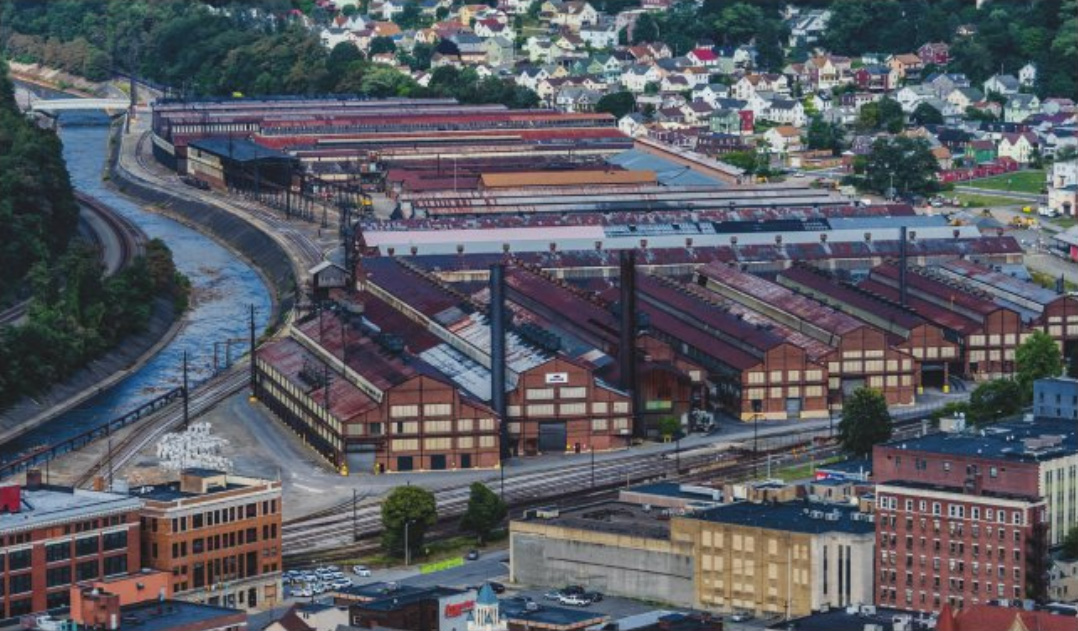Rust to Tech : Part I
- Published: November 01, 2021
By Susan Stansbury, Contributing Writer

This begins a five-part series, “Rust to Tech”. While some still think of the manufacturing engine of the U.S. as the old “rust belt,” those in the industry know it’s often a new technologically-driven behemoth. Traditionally, it is concentrated in the Midwest, but that’s changing, too.
Beginning with a look at the rust belt image, and concentrating on mills making substrates and related converting--is Part I. Parts II-IV will provide commentary on some of the latest converting capabilities and associated markets. Part V will concentrate on emerging and disruptive technologies impacting industry.
The Rust Belt
Some “industrial archeologists” commenting on the Rust Belt from the 1960s onward count states from western New York to the Midwest, and industries from coal, to steel, automotive, papermaking, converting, and manufacturing in general. Access to raw materials from paper mills along rivers, plus shipping lanes along canals and the Great Lakes, made the Midwest a hub. Other substrates including films and the development of nonwovens also came into play for converters.
When factories in various industries went down due to overseas competition, the Rust Belt label took off during the 1970s. In ensuing years, the lack of factory upgrades was also a factor. In addition, a transition away from the levels of unionization previously seen was occurring and wages stagnated. Still, certain manufacturing sectors remained relatively vibrant, such as the paper industry.
Paper and converting, primarily in the Midwest, stayed strong, particularly under Midwest ownership. When I served on the Wisconsin Paper Council decades ago, there were about 60 members; today, there are less than a third of that. Consolidation, outside owners of local mills, and shutdowns have comprised the papermaking scene. Through all this time, however, Wisconsin has been the number one papermaking state, and change is occurring in terms of capabilities, sustainability, and technology.
The image of Midwest manufacturing and converting as Rust Belt remnants has persisted, though it is changing, especially in the converting sector. The overlap of papermaking and converting has also been a factor with many mills that coat, cut, calender, and do more with jumbo rolls.
In recent years, mills have often outsourced the “converting” aspects to manufacturers who specialize in converting. One example was the outsourcing of rewinding-slitting by Georgia-Pacific in Green Bay to companies who are skilled at fast turnaround of precision cuts. In fact, many mills now turn to contract converting partners who have specialty operations.
More than ten years ago, I originated the tag “The Converting Corridor.” It’s the stretch from Green Bay to Milwaukee. If you drive that stretch along Hwy 41, it’s readily apparent that a string of factories lines the roadway attesting to this powerhouse of manufacturing. Wisconsin and Indiana constantly vie for the Number One position in U.S. manufacturing, and currently Wisconsin has the title. Yet, converting is always king in Wisconsin. In addition, the abundance of small-to-midsized converters means there is low likelihood of moving operations out of state or overseas. Their niche and specialty nature are another factor.
Converting by its definition means that these manufacturers add value to mill rolls of substrates. In many ways, it’s a newer, and more profitable, type of manufacturing as capabilities to convert through cutting, coating, laminating, printing, special finishes, and packaging offer marketers advanced potential to attract consumers. Accompanying the actual converter-manufacturing are the equipment and other suppliers, from adhesives and pressure-sensitives, to testing, controls and so much more.
Converting expertise is not only affected by the latest equipment, but a variety of other factors also have largely kept the “rust” away. These include:
- The ability to adapt and upgrade current equipment to develop niche markets;
- Improved process controls that result in more seamless production and productivity;
- Increased expertise delivered both internally and assisted by external consultants; and
- Fast response and increased converting offerings that result in trendy products.
Coincidentally, a new television series (based on the book) American Rust is coming this fall. It’s set in the heart of the East Coast Rust Belt, Pennsylvania, and illustrates the continued interest in this era of American manufacturing. Too often we hear, “Our country doesn’t make things anymore.” In converting, we say that is a misnomer in terms of this industry and the quiet success it continues to earn.
Stay tuned for Part II, where the types of converting capabilities are examined along with associated technologies that keep this industry vibrant.
About the Author
Susan Stansbury is a converting advocate with extensive experience in the paper, converting, printing and related industries serving in roles including sales and marketing management.









